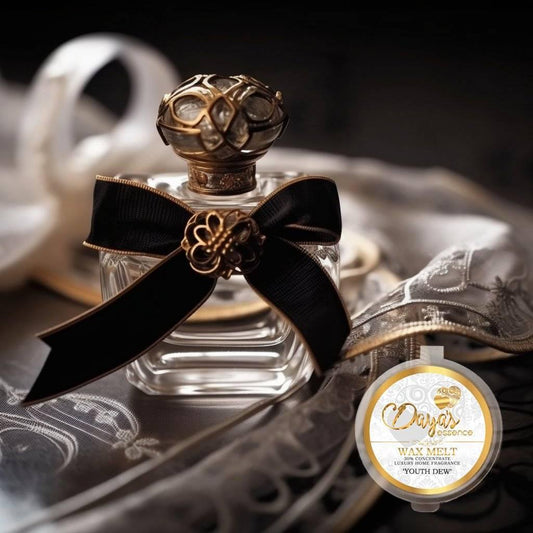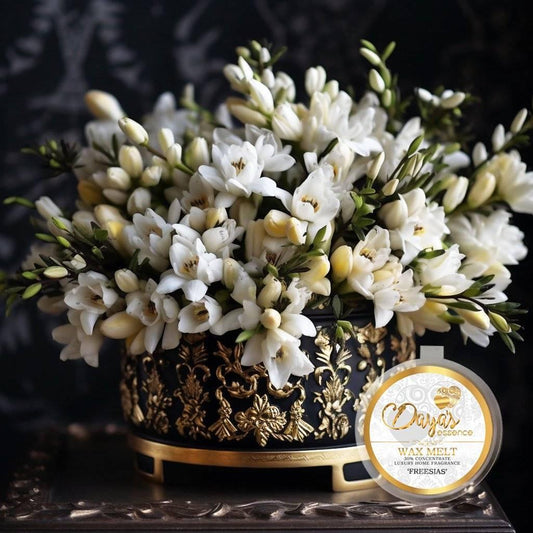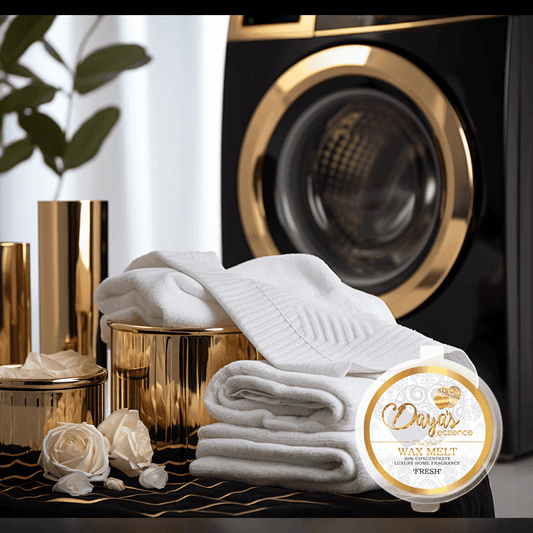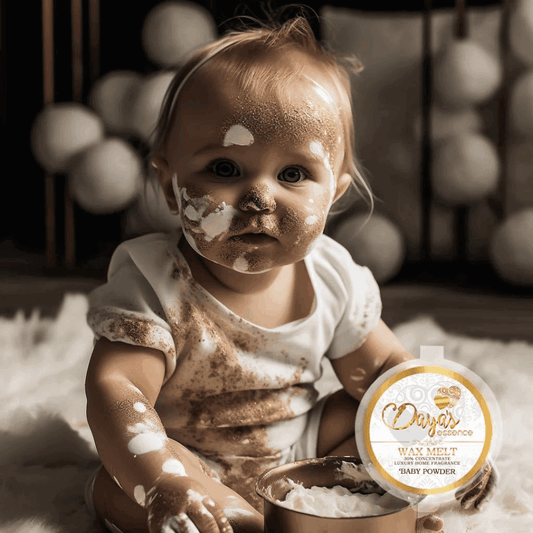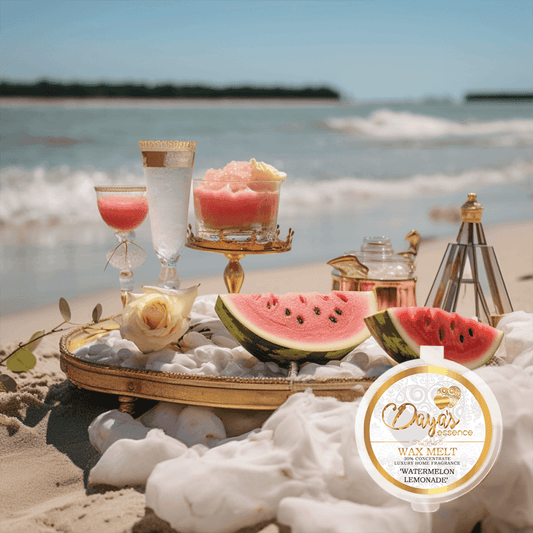Dayas Essence
Strong Scent Wax Melt – DETOL: A Fresh Blast of Pine
171 in stock
Couldn't load pickup availability
I absolutely love these wax melts I've been trying to find melts that have a good throw but everyone I've tried smell really good if you stand over them but we have an open plan house so I can smell these wax melts all through the house even the next day. Thankyou so much
My favourite
Nice scent n strong I would luv to try a pure natural detol..
All these wax melts are great fragrances n strong scents suits me great
Absolutely stunning fragrance that was extremely strong 👏 Only needed to use a quater of the pot The fragrance lasted many many hours 🥰 You won't find another company with wax as strong as this vendour, Fantastic value for money 👍
Amazing strong melts can smell them all through the house.
You know that feeling when you’ve done a deep clean, and it makes you smile because it scratches that itch in your head and feels oh-so satisfying?
Detol Pine brings that classic disinfectant antiseptic scent to life, making your home feel refreshed and revitalised.
With a whopping 30% fragrance load, three times more than standard wax melts, this isn’t just a wax melt; it’s a powerhouse of freshness.
If you’re after highly fragranced wax melts that actually deliver, you’ve found your match.
The scent kicks off with eucalyptus and lime, a bold combo that feels like a burst of energy for your home.
It’s as if the best wax melts UK has ever seen just threw a party in your living room.
Pine follows closely behind, bringing a crisp, outdoorsy vibe that reminds you why wax melts strong and fragrant are always worth it.
As the wax melts, thyme steps up with herbal warmth, like a comforting hug after a long day. And the finale?
Pine needles and fresh wood deliver a long lasting scent that’s clean, grounding, and perfect for anyone tired of smelly candles that just don’t last.
Detol Pine doesn’t just mask bad smells; it obliterates them and leaves your home smelling like a fresh start. And remember, with our 30% fragrance load, you’re getting the best wax for wax melts that outshine the rest.
Swap out weak scented wax melts for these super strong wax melts that bring luxury wax melts UK vibes without the price tag. Our 30% fragrance load means these are the strongest smelling wax melts UK can offer, giving you long-lasting freshness with every melt.
Go on, try one today; you’ll be thinking, “Where has this scent been all my life?”
Top Notes: Eucalyptus, Lime, Pine
Imagine eucalyptus storming in like a one-person cleaning crew, lime adding a cheeky citrus twist, and pine standing tall and proud, ready to impress.
Heart Notes: Thyme, Herbal Accents
Thyme is the calm, unflappable friend who always knows what to say, while herbal accents create a soothing zen atmosphere.
Base Notes: Pine Needle, Fresh Wood
Pine needles sparkle like the forest’s glitter, while fresh wood gives a sturdy, grounding finish that lingers beautifully.
Let me tell you, Detol Pine isn’t for the faint-hearted or the fragrance-shy. It’s the kind of scent that makes an entrance, clears the air (literally), and leaves you wondering how you ever lived without it.
If you’re the type who loves that just-cleaned-the-house feeling but doesn’t always fancy the elbow grease, this is the one for you. It’s bold, unapologetic, and always ready to step up for those “please just make it smell nice” moments we all have.
Can Wax Melts Be Used in Spaces with High Humidity, Like Bathrooms?
Absolutely! Wax melts can be enjoyed in high-humidity areas like bathrooms, but there are a few things to keep in mind. Humidity can impact the way fragrance diffuses, as scent molecules need to cling to the air to disperse fully.
In spaces with heavy moisture, the fragrance can struggle to travel, making it harder to fill the room as effectively.
The good news? Our wax melts are loaded with 30% fragrance oil – that’s three times the typical amount – which gives them an added push, even in tricky spaces like humid bathrooms.
Here’s how to make the most of your wax melts in high-humidity areas:
Use a Full Tub for Scent Power: Humidity can weigh down scent diffusion, but with our melts’ high fragrance load, a full tub in your warmer will give the fragrance aroma the strength it needs to spread in a moisture-rich space.
The extra fragrance oil content ensures a long-lasting scent that clings to the air even when humidity is high.
Keep Some Airflow: To help the fragrance move, maintain a bit of airflow, like a slightly open window or bathroom fan. Ventilation allows the scent to circulate, countering the effect of moisture that can weigh down the fragrance throw.
Mind the Warmer Placement: Place your warmer on a dry, stable surface, away from direct water contact. This helps both your warmer and wax melt perform their best without interference from steam or splashes.
For the best scent experience in any room, explore our selection of 30%-loaded melts on our site – they’re crafted to make a lasting impact, humidity and all!
What Impact Does the Type of Burner Dish Material (Glass, Ceramic, Metal) Have on Fragrance Release?
The material of your burner dish—whether it’s glass, ceramic, or metal—affects how the fragrance is released from your wax melts. Each material handles heat differently, which can influence how effectively the scent disperses and how long the fragrance lasts. Wattage also plays a role here, as higher wattages intensify heat, affecting the fragrance throw.
Here’s how each dish material impacts your wax melt experience:
Ceramic Dishes: Ceramic dishes are designed to withstand steady heat without overheating the wax, helping to prevent the fragrance from dissipating too quickly. Ceramic warms the wax at a stable, even rate, allowing the fragrance to release gradually. With the right wattage (typically around 20-40 watts), ceramic dishes offer a balanced scent experience without burning off the fragrance too quickly.
Glass Dishes: Glass heats up faster than ceramic, and with continuous heating, it can reach higher temperatures. This can lead to a strong, immediate scent throw but may also reduce longevity, as the fragrance oil in the melt evaporate more rapidly under the higher heat. Glass dishes are great for quick, bold scent release but may require more frequent wax changes if used with high wattages, as the scent can fade faster than with ceramic.
Metal Dishes: Metal dishes are excellent heat conductors and can reach high temperatures quickly, making them ideal for an immediate, intense fragrance throw. However, due to their high heat conductivity, they may cause the fragrance to evaporate at a faster rate, leading to shorter scent longevity. Metal dishes are best suited for shorter bursts of fragrance, as the higher heat can cook off the scent faster than ceramic or glass.
Choosing the Right Burner Dish Material for Your Needs:
Ceramic dishes are the most reliable for maintaining fragrance longevity, as they’re designed to withstand steady heat without overheating.
Glass and metal dishes are better suited for quick, strong bursts of scent, but they may reduce fragrance longevity, especially if used with high-wattage warmers. Ultimately, each material offers a unique scent experience, so it’s worth experimenting based on your preferences for scent throw and duration.
Best Method to Clean Stubborn Dye Stains and Stuck Glitter from Wax Melt Dishes
Warm Water and White Vinegar Soak: Fill the dish with warm (not boiling) water and add a splash of white vinegar. Let it soak for 10–15 minutes to help loosen dye and glitter particles. Vinegar is gentle yet effective for lifting stains.
Baking Soda Paste: After soaking, make a thick paste with baking soda and a few drops of water. Apply this to the stained areas and use a soft cloth or sponge to gently scrub. Baking soda is mildly abrasive, helping to lift dye and glitter without scratching.
For Tougher Stains – Try The Pink Stuff: If stains persist, apply a tiny dab of The Pink Stuff on a damp cloth or sponge and gently work it into the stained areas. The Pink Stuff is more abrasive, so use it sparingly to avoid scratches. It’s particularly effective on dye stains and glitter residues.
Rubbing Alcohol for Dye Residue: For remaining dye stains, use a cotton ball with rubbing alcohol and gently wipe the affected areas. Alcohol dissolves dye effectively, leaving the dish stain-free.
Rinse and Dry: Rinse thoroughly with warm water and dry with a soft cloth. Prevent Future Stains:
To avoid repeat issues, use silicone liners in your warmer to catch any dyed or glittery wax melts. These make cleanup easy and protect your dish.
Additional Info▼
CLP:

Share

Customer Reviews
Presented In
Presented in a 1oz tub (4.5cm width x 2.6cm height), this wax melt might be small, but it's definitely mighty. Your senses deserve this indulgence, so try it today and hit that buy button!
Size Comparison




Why Choose Our Wax Melts?
| Triple Fragrance Loaded for an Intense Aroma: All our wax melts have three times the fragrance poured into each melt, equating to a 30% concentrated fragrance load (compared to 10% in other brands). |
| Long-Lasting Scent: Get a minimum of 30 hours of burn time with an electric warmer (full tub) or 20 hours with a candle burner. |
| Phthalate & Carcinogen Free: No harmful nasties, so you can breathe easy. |
| Fully compliant: With HSE GB CLP and IFRA regulations. |
|
YOUR SENSES DESERVE THIS INDULGENCE. TRY TODAY! |
Have Questions?
Visit our FAQ page for answers to common questions about our products.
-
Sea MarineRegular price £2.48 GBPRegular price
- Choosing a selection results in a full page refresh.
- Opens in a new window.

